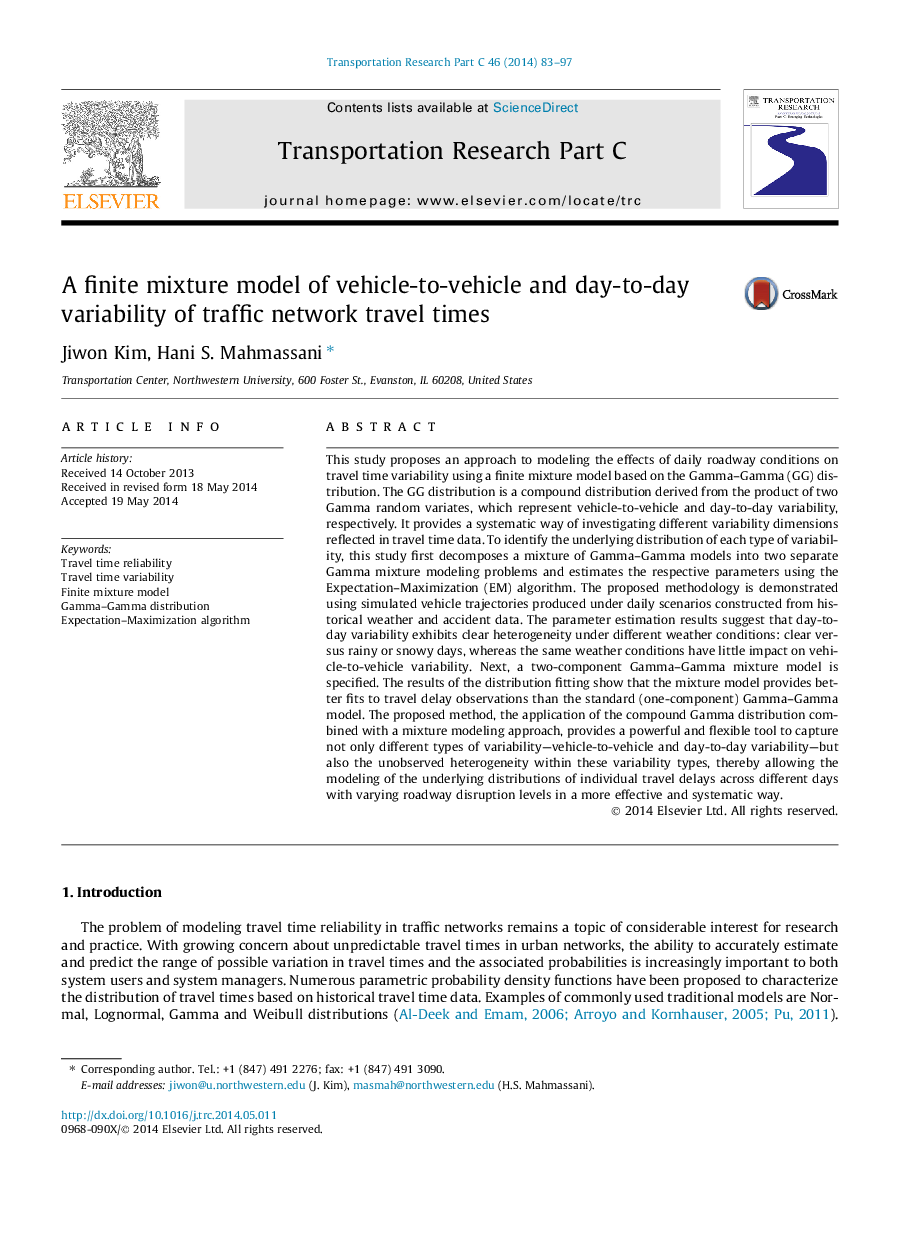| کد مقاله | کد نشریه | سال انتشار | مقاله انگلیسی | نسخه تمام متن |
|---|---|---|---|---|
| 6937084 | 868854 | 2014 | 15 صفحه PDF | دانلود رایگان |
عنوان انگلیسی مقاله ISI
A finite mixture model of vehicle-to-vehicle and day-to-day variability of traffic network travel times
ترجمه فارسی عنوان
یک مدل مخلوط محدود از زمان حمل و نقل شبکه ترافیکی وسیله نقلیه به وسیله نقلیه و روز به روز
دانلود مقاله + سفارش ترجمه
دانلود مقاله ISI انگلیسی
رایگان برای ایرانیان
کلمات کلیدی
قابلیت اطمینان سفر تغییر زمان سفر متغیر مدل مخلوط محدود توزیع گاما گاما، انتظارات الگوریتم حداکثر سازی،
موضوعات مرتبط
مهندسی و علوم پایه
مهندسی کامپیوتر
نرم افزارهای علوم کامپیوتر
چکیده انگلیسی
This study proposes an approach to modeling the effects of daily roadway conditions on travel time variability using a finite mixture model based on the Gamma-Gamma (GG) distribution. The GG distribution is a compound distribution derived from the product of two Gamma random variates, which represent vehicle-to-vehicle and day-to-day variability, respectively. It provides a systematic way of investigating different variability dimensions reflected in travel time data. To identify the underlying distribution of each type of variability, this study first decomposes a mixture of Gamma-Gamma models into two separate Gamma mixture modeling problems and estimates the respective parameters using the Expectation-Maximization (EM) algorithm. The proposed methodology is demonstrated using simulated vehicle trajectories produced under daily scenarios constructed from historical weather and accident data. The parameter estimation results suggest that day-to-day variability exhibits clear heterogeneity under different weather conditions: clear versus rainy or snowy days, whereas the same weather conditions have little impact on vehicle-to-vehicle variability. Next, a two-component Gamma-Gamma mixture model is specified. The results of the distribution fitting show that the mixture model provides better fits to travel delay observations than the standard (one-component) Gamma-Gamma model. The proposed method, the application of the compound Gamma distribution combined with a mixture modeling approach, provides a powerful and flexible tool to capture not only different types of variability-vehicle-to-vehicle and day-to-day variability-but also the unobserved heterogeneity within these variability types, thereby allowing the modeling of the underlying distributions of individual travel delays across different days with varying roadway disruption levels in a more effective and systematic way.
ناشر
Database: Elsevier - ScienceDirect (ساینس دایرکت)
Journal: Transportation Research Part C: Emerging Technologies - Volume 46, September 2014, Pages 83-97
Journal: Transportation Research Part C: Emerging Technologies - Volume 46, September 2014, Pages 83-97
نویسندگان
Jiwon Kim, Hani S. Mahmassani,
